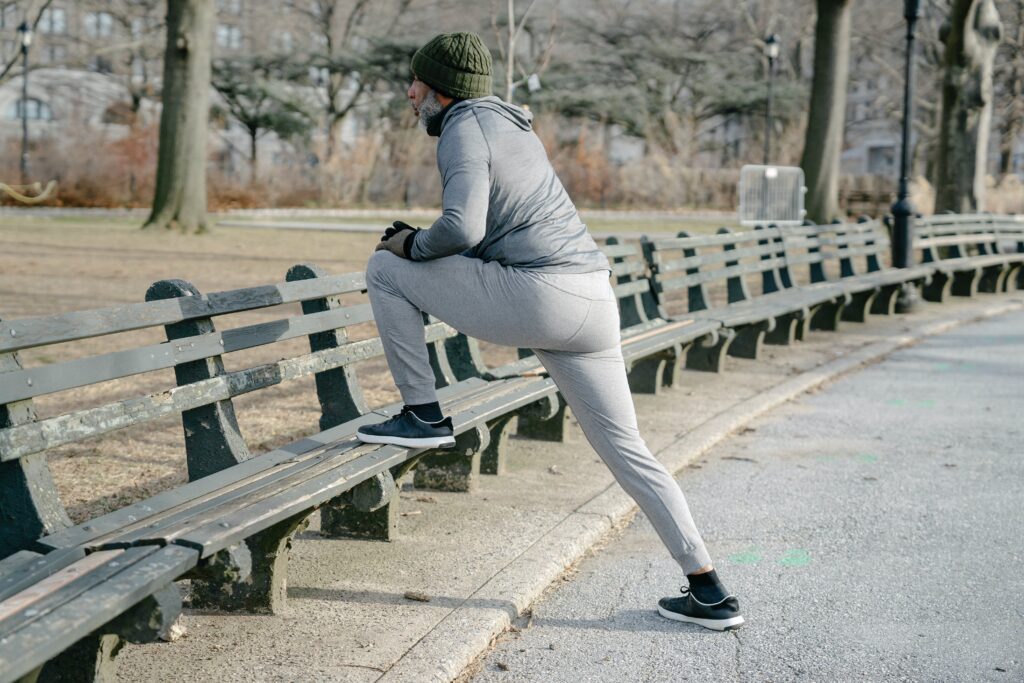Maintaining your health takes time and we don’t have a lot of that to spare. So when we have to chose between training for strength and flexibility, which one do we spend time on? If we wanted to be have both we would have to train all the time. Train like a gymnast wouldn’t we? Well I don’t personally think so. More on that a bit later.
I feel like a lot more is known about strength training. But why is flexibility important and what is it. Flexibility and range of motion are highly interconnected. Where flexibility is often used more to describe muscles and range of motion is often used to describe joint, bone or ligament. Both of these terms are relevant to this conversation.
Range of motion (ROM) is the extent to which a joint can move in a particular direction. It is measured in degrees and is limited by the bones, ligaments, tendons, and muscles surrounding the joint. So understanding how to maintain your range of motion requires a solid understanding of your bones, ligaments, tendons and muscles surrounding the joint that you are training. And unfortunately not many folks have this degree of understanding. On top of that, range of motion decreases without regular work to maintain it. And despite what google may say it is not normal aging to have a decrease in ROM. I may make a post on this in the future for those who doubt.
Traditional strength training leads to muscle tightness and decreased flexibility. I know for those you that understand these concepts thoroughly you may realize that isn’t always the case so stick with me. See, traditional strength training requires progressive overload to strength muscles. Progressive overload means we need to progress one of these variables: repetitions, sets, or load. With out that muscles will not increased strength. And most people lose range of motion while using this method. That’s because it’s really hard to understand how much load is appropriate and how much range of motion (flexibility) the joint has. So when strengthening we often lose range of motion.
Ways to maintain flexibility:
1. Static stretching
This is the method that takes time. Let me explain. 60 seconds or greater three times daily for each muscle is the requirement to lengthen a muscle. And how many muscles are there in the human body? Should we just stretch the ones we are training? Should we stretch them all? Hint: there is no solid answer to those questions. Static stretching is time consuming. Although I love his content I have to say listen up “stay flexy“.
2. Loaded stretching
This is the method that those who understand each joint’s range of motion try to employ. This is similar to progressive overloading, but instead of increasing the weight, you are increasing the range of motion. For example, you could start by doing a bench press with a light weight and full range of motion. As you get stronger, you can gradually increase the weight, while maintaining the full range of motion. But as discussed it requires a full understanding of bones, ligaments, tendons and muscles to know whether you’re using your full ROM. Folks like Milo Strength and Coach Kilian seem to use this method as they have that understanding of ROM. You can learn more about it from Christian Thibeadeau.
3. Use complex or “Compound” movements
Another way to maintain flexibility while strength training is to do compound exercises vs simple exercises. Complex movements in exercise are those that involve multiple muscle groups and joints working together. Squats, deadlifts, lunges, push-ups, pull-ups, overhead press, cleans, snatches, Turkish get-ups, kettlebell swings, battle ropes, and box jumps are all complex movements. In a sense you are using one area of the body to stretch another. This seems to be the method that Laura Kummerle goes to.
4. Use more pragmatic and proven methods
Simply put, use methods taught by people who understand range of motion.
Oftentimes yoga is an option and is commonly available. Understand that this can’t be your only training method as it largely negates strengthening but it will help you achieve flexibility. The movements in yoga combine physical postures, breathing exercises, and relaxation. Yoga can help to improve flexibility, stability, balance, and coordination. It can also help to reduce stress and improve overall well-being.
Another more modern example is something called “Crawling”. Crawling is a great way to improve core strength, flexibility, and coordination. It is also a low-impact activity, which makes it ideal for people with trying to maintain or improve their range of motion during recovery days. Strength side covers this thoroughly.
Training like Laura Kummerle, despite her gymnast background employs habits that maintain range of motion while strengthening at the same time. If you’re a young lady with that background you may like her content.
Nutrition and Sleep
Flexibility requires two other important things and I bet you know them. You need to get plenty of sleep. Sleep is essential for muscle recovery. When you don’t get enough sleep, your muscles are more likely to be tight and stiff. Nutrition is largely important as well.
Healthy nutrition drives everything in life. If you give your body nutrient dense foods that are naturally found then you’re likely going to hit this goal. Inflammatory foods are huge factors that cause a reduction in range of motion and flexibility.
How we move alters our future. I often see shoulder, knee and hip replacement patients and it’s a real chore to rehab. The first goal is always to get their range of motion back and often times they never do. Lots of these surgeries would even have been avoided had the patient kept their range of motion at a young age. Loss of range of motion leads to arthritic changes. These arthritic changes lead to pain.
Are there other questions you have about flexibility, range of motion or moving to adventure? Please comment below.
Thanks for reading
Daniel

